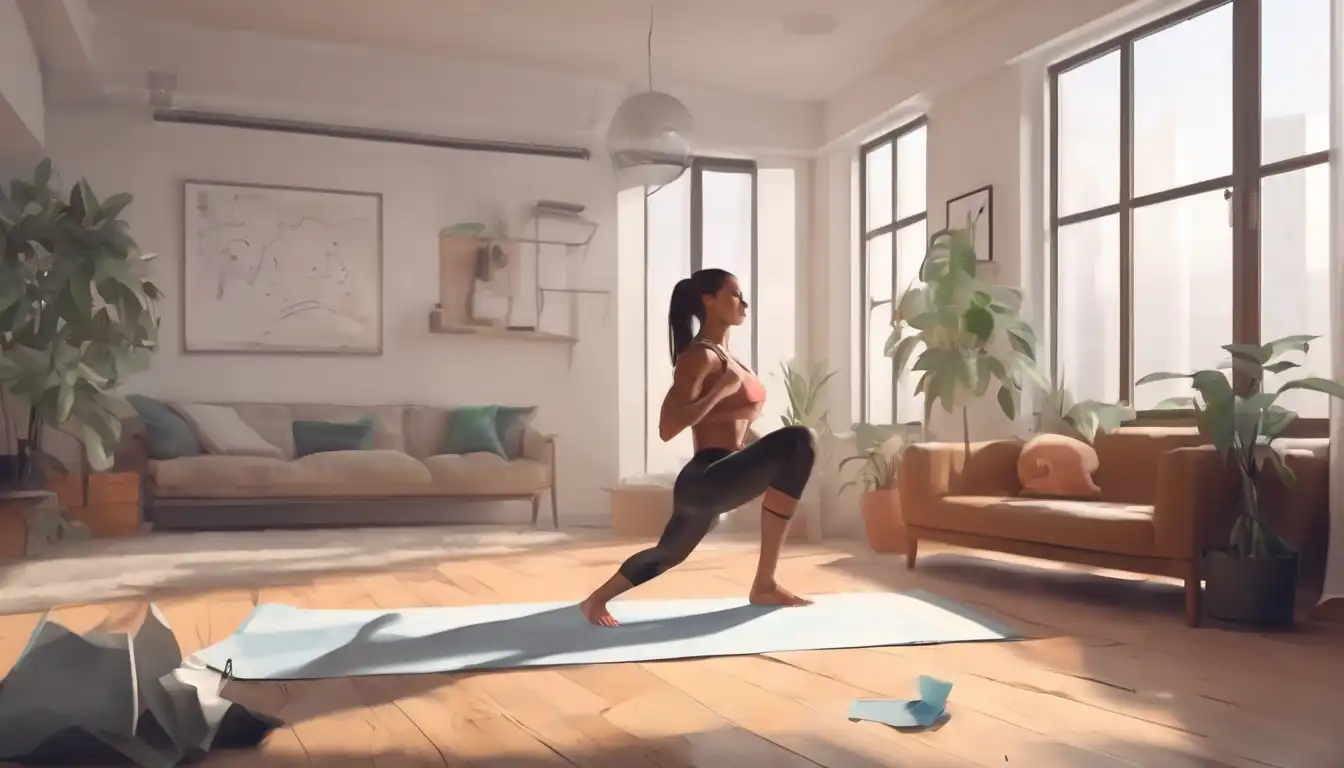No-Equipment Fitness: Effective Home Workouts You Can Do Anywhere
In today's fast-paced world, finding time to hit the gym can be challenging. However, that doesn't mean you have to sacrifice your fitness goals. Effective home workouts with no equipment needed offer a practical solution for busy individuals looking to stay active and healthy. These workouts leverage your body weight to build strength, improve cardiovascular health, and enhance flexibility—all from the comfort of your home.
Why Choose No-Equipment Home Workouts?
No-equipment workouts are incredibly versatile and accessible. They eliminate common barriers to exercise, such as cost, time constraints, and lack of access to fitness facilities. Whether you're a beginner or an experienced fitness enthusiast, bodyweight exercises can be modified to match your fitness level. Plus, they require minimal space, making them ideal for small apartments or busy households. For more tips on starting your fitness journey, check out our guide on beginner fitness tips.
Key Benefits of Bodyweight Training
Bodyweight exercises offer numerous advantages beyond convenience. They improve functional strength, which helps with everyday activities like lifting groceries or climbing stairs. Additionally, they enhance balance, coordination, and core stability. Since you're using your own body as resistance, the risk of injury is often lower compared to heavy weightlifting. These workouts also promote muscle endurance and can be combined for a full-body routine.
Essential No-Equipment Exercises for a Full-Body Workout
To maximize your results, focus on compound movements that engage multiple muscle groups. Here are some foundational exercises to include in your routine:
- Push-Ups: Target the chest, shoulders, triceps, and core. Variations include incline push-ups (easier) and decline push-ups (harder).
- Squats: Work the quadriceps, hamstrings, glutes, and calves. For added intensity, try jump squats or pistol squats.
- Planks: Strengthen the entire core, including the abdominals and lower back. Hold for 30-60 seconds, or try side planks for obliques.
- Lunges: Engage the legs and glutes. Forward, reverse, and walking lunges are excellent options.
- Burpees: A high-intensity move that combines a squat, push-up, and jump for cardiovascular benefits.
Incorporate these exercises into a circuit for an efficient workout. For example, perform each exercise for 45 seconds, rest for 15 seconds, and repeat the circuit 3-4 times. This approach keeps your heart rate elevated and builds stamina. If you're new to high-intensity intervals, read our article on HIIT for beginners.
Sample 30-Minute No-Equipment Workout Routine
This routine is designed to target all major muscle groups. Warm up with 5 minutes of light cardio (e.g., jogging in place or jumping jacks) before starting.
- Push-Ups: 3 sets of 10-15 reps (rest 30 seconds between sets)
- Bodyweight Squats: 3 sets of 15-20 reps (rest 30 seconds)
- Plank: Hold for 30-60 seconds, repeat 3 times (rest 20 seconds)
- Alternating Lunges: 3 sets of 10-12 reps per leg (rest 30 seconds)
- Glute Bridges: 3 sets of 15 reps (rest 20 seconds) to activate the posterior chain
- Mountain Climbers: 3 sets of 30 seconds (rest 20 seconds) for cardio
Cool down with 5 minutes of stretching, focusing on the legs, chest, and back. Consistency is key—aim to do this workout 3-4 times per week. As you progress, increase reps or reduce rest time for greater intensity.
Tips for Maximizing Your No-Equipment Workouts
To get the most out of your home workouts, keep these strategies in mind:
- Focus on Form: Proper technique prevents injury and ensures you're targeting the right muscles. Watch online tutorials if needed.
- Progress Gradually: Increase difficulty by adding reps, slowing down movements, or trying advanced variations.
- Combine with Cardio: Add jumping jacks or high knees between sets to boost calorie burn.
- Stay Hydrated: Drink water before, during, and after your workout.
- Track Your Progress: Use a journal or app to monitor improvements in strength and endurance.
For additional motivation, pair your workouts with a balanced diet. Explore our resources on nutrition for fitness to support your goals.
Common Mistakes to Avoid
Even simple bodyweight exercises can lead to setbacks if done incorrectly. Avoid these pitfalls:
- Rushing Through Reps: Prioritize controlled movements over speed to maintain form.
- Neglecting Warm-Ups/Cool-Downs: Skipping these increases injury risk and reduces flexibility.
- Overtraining: Allow 48 hours of rest between intense sessions for muscle recovery.
- Ignoring Muscle Imbalances: Incorporate exercises that address weaker areas, like the back or glutes.
If you experience pain, stop immediately and consult a professional. For more on injury prevention, see our post about safe exercise practices.
Conclusion: Embrace the Convenience of Home Workouts
Effective home workouts with no equipment needed are a powerful tool for maintaining fitness without excuses. By leveraging bodyweight exercises, you can build strength, improve health, and save time and money. Start with the basics, stay consistent, and gradually challenge yourself. Remember, the best workout is the one you actually do—so clear a small space, press play on your favorite music, and get moving today!
Ready to take the next step? Dive deeper into fitness with our comprehensive guide on creating a home gym on a budget.
